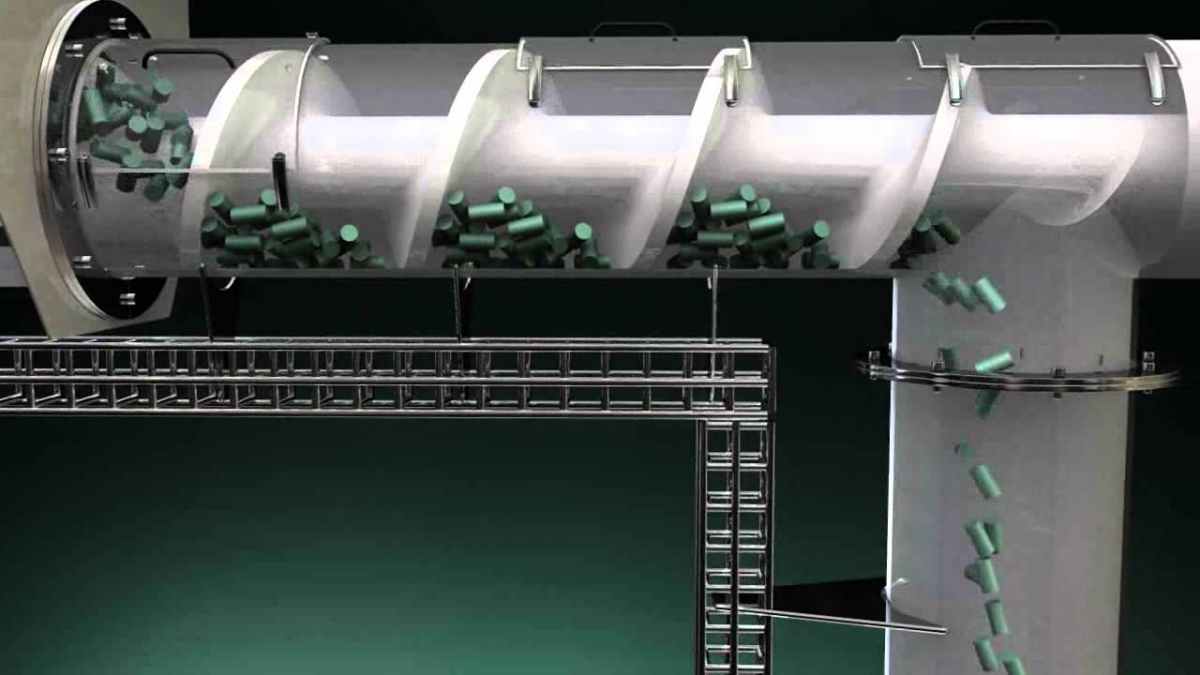
In the technical and industrial field, choosing production machinery is fundamental to optimize production times, ensure maximum quality of the finished product, save money, and therefore optimize profits.
In particular, dosing machines represent one of the most important tools in this regard, to avoid waste and ensure a constantly calibrated and functional dosing of materials.
Let’s see together how to choose the right dosing screw to insert into your production process, with the aim of reducing waste and consequent savings.
Table of Contents
What are powder or granulate dosing screws?
Among the various machinery for processing plastic materials, the dosing screw is a device used to calibrate a certain quantity of material, in the form of powder or granules, with precision and constancy.
The application sectors of dosing screws are among the most varied, as they can also measure very different materials: from microplastics to aluminum powders, as well as flour, sugar, salt, fertilizers, or chemicals.
Dosing screws are therefore used in various industrial sectors, including food, pharmaceutical, chemical, cosmetic, manufacturing, or any other area where it is necessary to calibrate the amount of material used during production with extreme precision.
Each dosing screw is made up of a rotating helix, which pushes the material through a tube or channel until it reaches the discharge point.
The speed and rotation of the helix are customizable and adapted to the specific needs of the process to regulate the flow of the material, its speed and quantity, and ensure a consistently precise dosage, avoiding waste.
However, it is often heard about “gravimetric dosing”: what changes in this case?
What is gravimetric dosing?
Compared to other dosing systems, gravimetric dosing is the top of the line, as it can guarantee greater precision in the measurement, calibrating the dosage directly based on the weight of the material.
The flow rate is also more controllable to adapt to different production process needs.
So, which dosing screw to choose to optimize productivity and avoid waste while saving money?
Dosing screw: parameters to consider for the choice
The choice of a dosing screw depends on several factors, deriving from the needs of the finished product.
- Material type: the screw must be chosen based on the nature of the material it must dose (consistency, density, viscosity…).
- Dosing capacity: the amount of material that must be dosed in a certain interval of time affects the choice. In addition, the dosing capacity must be consistent with the needs of the production process.
- Dosing accuracy: this is very important to ensure the quality of the final product and to avoid waste. The precision depends on the shape of the screw and the dosing system control.
- Working environment: the place where the dosing screw will be installed may affect the choice of the material it is composed of. For example, if the environment is “corrosive” or “aggressive,” it will be necessary to choose a screw capable of withstanding such conditions.
- Safety and hygiene: if the screw is used in the food or pharmaceutical sector, safety and hygiene are critical factors. The screw must be easily cleaned and sanitized to avoid contamination.
Once these parameters have been considered, however, another doubt arises: does the shape and design of the dosing machine affect the final result?
Is the design of the dosing screw important?
The choice of the design of the screw dosing unit mainly depends on the needs of the production process and the characteristics of the material that needs to be measured.
However, there are some important factors to consider when choosing materials and shapes.
- The geometry of the screw: it should be chosen based on the characteristics of the material to be dosed (shape, size, and density). For example, if the material is particularly dense, it may be necessary to use a screw with a more pronounced helix profile to ensure proper dosing.
- The diameter of the screw: it depends on the amount of material; the larger the diameter, the greater the dosing capacity.
- The length of the screw: it should be chosen based on the required dosing accuracy and the amount of material; the longer the length, the greater the dosing accuracy.
- The construction materials: they should be chosen based on the needs of the production process and the properties of the material to be dosed. For example, if the material is corrosive, it will be necessary to choose a screw made of stainless steel, which is resistant to corrosion.
- The supporting structure: the supporting structure of the screw should be chosen based on the needs of the production process and the environmental conditions. For example, if the screw needs to be mounted on a mobile support, a lightweight but sturdy structure will be necessary.
The best screw dosing units for powders and granules
In conclusion, the best types of screw dosing units, distinguished based on their shape, which obviously also determines their function, are two: spiral screws and single-screw units.
The spiral screw has a wide transport profile and therefore also a great potential for productivity.
Thanks to its more open design, it is more suitable for coarser ground material and/or thicker foil fragments.
Its lower surface area also prevents the product from adhering and makes the spiral screw less susceptible to transport profile blockage.
The single-screw unit with a “core” has a smaller active profile and is therefore particularly suitable for granulate dosing.